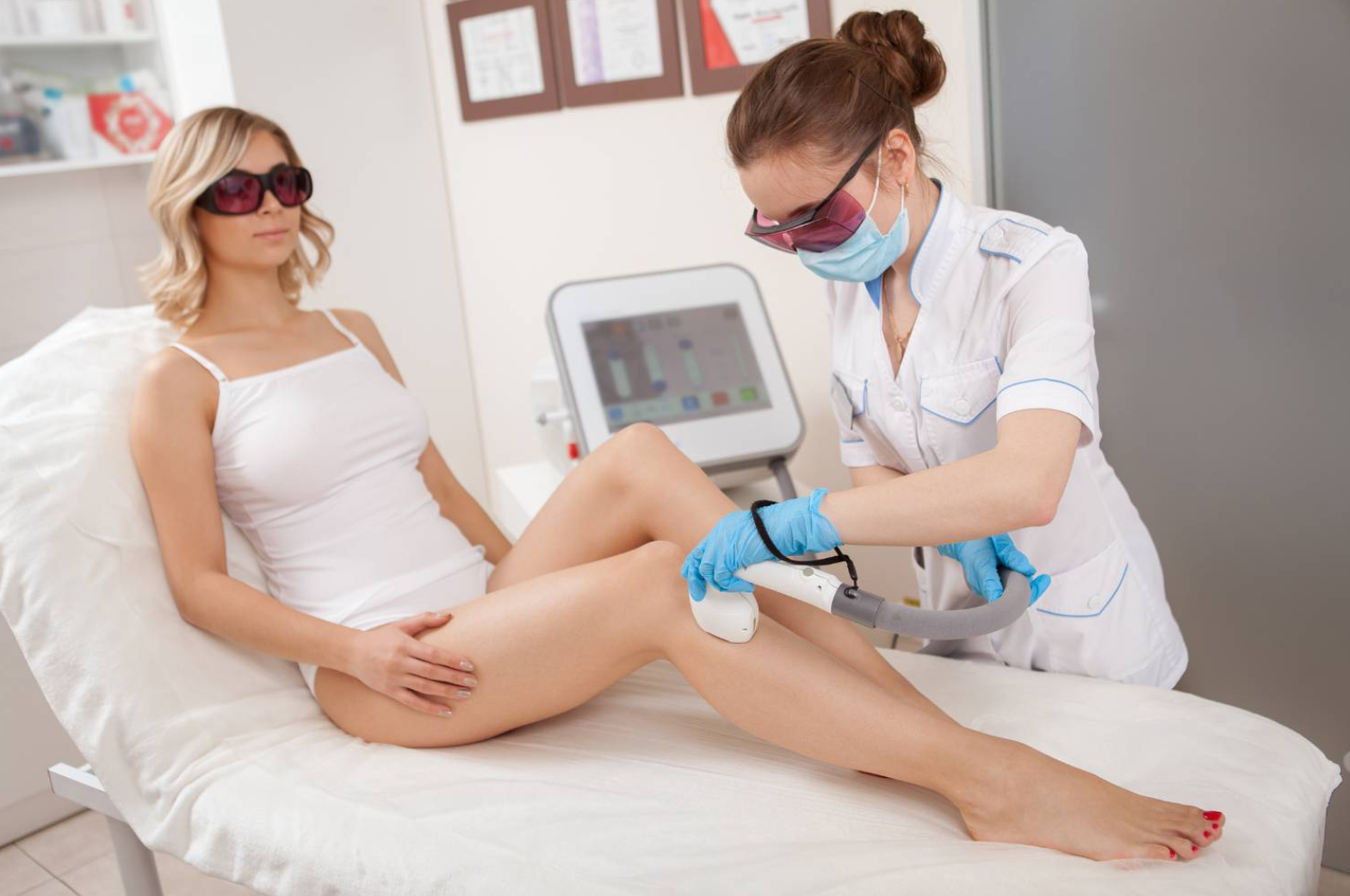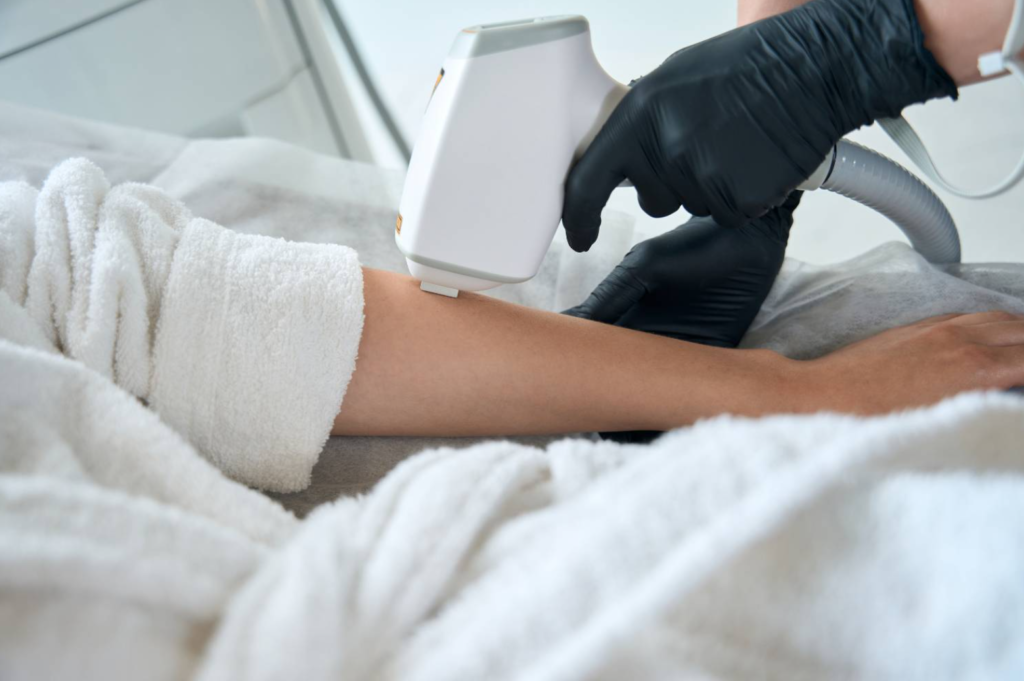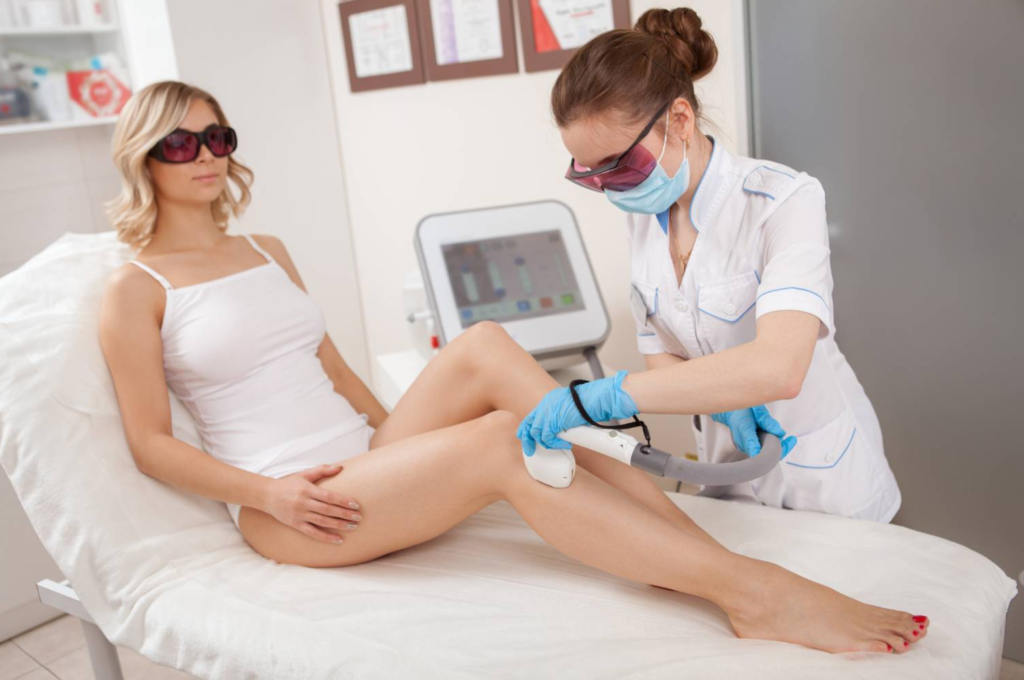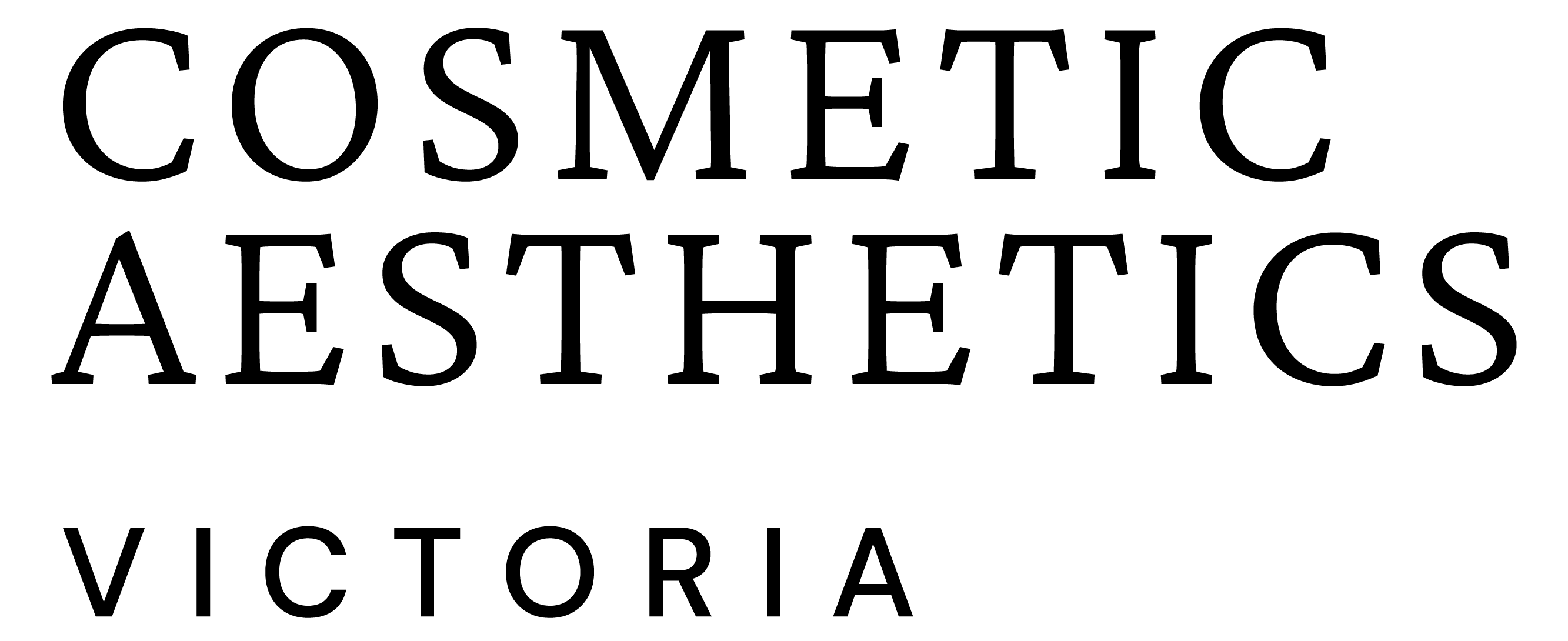
Is Laser Hair Removal Safe? Debunking Common Myths And Misconceptions
When I first decided to try laser hair removal, I was full of questions and a little hesitant, just like many of my clients. I had heard so many myths and misconceptions over the years—some people swore by it, others said it was dangerous. But after diving into the treatment, I quickly realised that laser hair removal is one of the safest and most effective methods for long-term hair reduction when done correctly.
Over the years, I’ve had the privilege of helping hundreds of people achieve smoother, hair-free skin and debunk the myths that often hold them back from trying this incredible treatment. Whether you’re tired of the constant shaving and waxing or you’re just curious about how it works, I’m here to set the record straight.
In this blog, we’ll tackle some of the most common myths about laser hair removal, explore its safety, and share the truth about the process from someone who’s seen it all. If you’ve been wondering, “Is laser hair removal safe?” or if you’ve heard questionable things about it, keep reading. It’s time to clear up the confusion once and for all.
Myth 1: Laser Hair Removal Is Painful
When I first considered laser hair removal, I was a little hesitant due to the stories I’d heard about the pain. Many people likened it to a rubber band snapping against the skin, but I couldn’t help but wonder if it was going to be unbearable. Fast forward to my first session – I was surprised at how bearable it was! Sure, there was some discomfort, but it wasn’t nearly as bad as I had imagined.
The truth is, modern laser technologies are much gentler than the earlier systems. These days, lasers come equipped with cooling mechanisms, such as sapphire tips or cryogen sprays, which significantly reduce the discomfort. I’ve had several treatments now, and each time, the sensation was more like a quick snap, almost like the feeling you get when you accidentally flick yourself with a rubber band. In fact, many of my clients have even told me that they found it less painful than waxing!
I remember one of my clients, Sarah, who was dreading her first session because of the fear of pain. After the treatment, she said, “That was nothing like what I thought it would be! I barely felt a thing. I’m definitely coming back for more.”
In short, while you might feel a slight discomfort, it’s nothing compared to the pain of waxing or tweezing, and with proper aftercare, the sensation is kept to a minimum.

Myth 2: Laser Hair Removal Doesn’t Work On Dark Skin Or Light Hair
In the past, this myth had some truth. Earlier laser technologies were most effective on people with fair skin and dark hair, primarily because these systems relied on high contrast between the hair and skin pigment to target the hair follicles. However, the landscape of laser hair removal has changed dramatically in recent years, especially with the introduction of newer and more advanced lasers.
Take, for example, the Nd:YAG (1064nm) laser, which has made laser hair removal a safe and effective option for people with darker skin tones. I’ve worked with many clients with Fitzpatrick types IV-VI, and they’ve had great success with the Nd:YAG laser. It’s designed to penetrate deeper into the skin, targeting the hair follicles without harming the skin’s pigment.
In fact, I had a client, Tom, who came in for a consultation with some concerns. He had dark skin and was worried that the treatment wouldn’t work for him. We decided to go with the Nd:YAG laser, and after a few sessions, he was amazed by the results. “I wasn’t sure if this would work for me,” he said. “But I can already see a noticeable difference, and it doesn’t hurt!”
For lighter skin types (I-III), Alexandrite lasers (755nm) work particularly well, while Diode lasers (810nm) are more versatile and effective for various skin types (I-V). The combination of these advanced technologies has made it possible to treat a wide range of skin tones and hair types effectively.
Myth 3: Laser Hair Removal Damages Skin
I’ve heard it all when it comes to this myth – from “laser hair removal burns your skin” to “it causes permanent skin damage.” The truth? This is rarely the case. In fact, when performed by a certified and trained professional using medical-grade, TGA-approved equipment, the risks of serious skin damage are minimal.
I’ve been in this industry for years, and I’ve never once seen a client experience permanent damage, but I have seen cases where improper technique or untrained individuals caused unnecessary burns or scarring. It’s crucial to go to a reputable clinic where professionals use the appropriate lasers for your skin type and follow all safety protocols.
Take, for example, a situation I witnessed a few years ago. A client came in after having a treatment at a non-certified salon, and unfortunately, the technician had used a laser that wasn’t suited to her skin type, which led to some minor burns. It was a great reminder of why you should always trust professionals who follow strict safety standards.
When done correctly, laser hair removal is designed to target the hair follicles with precision, leaving the surrounding skin untouched. The heat from the laser is absorbed by the melanin in the hair, not the skin. It’s essential to follow pre- and post-care instructions, such as avoiding direct sun exposure and using gentle skincare products, to ensure the best results and minimise any potential risk.
Myth 4: Laser Hair Removal Has Heavy Side Effects
Another misconception I often encounter is the belief that laser hair removal comes with severe, long-lasting side effects. The reality? Most side effects are temporary and mild, usually lasting just a few hours to a couple of days.
When I had my first laser hair removal session, I was expecting some major downtime, but I was pleasantly surprised by how quickly I was back to my routine. After the treatment, I experienced a little redness and mild swelling around the treated area, kind of like the sensation you get after a good waxing session. But it went away by the next day.
For most people, side effects are minimal. Common effects include:
- Redness: Similar to mild sunburn, fading within a few hours.
- Swelling: Especially in more sensitive areas like the upper lip or bikini line.
- Mild Irritation: This might feel like skin sensitivity after waxing.
Rarely, more serious side effects can occur. These might include:
- Blistering or Crusting: Usually linked to improper technique or using the wrong laser for a particular skin tone.
- Changes in Skin Pigmentation: Hyperpigmentation (darker skin) or hypopigmentation (lighter skin) can happen, but these are typically temporary and resolve with time.
I remember a client named Jane who was concerned about potential side effects before her first session. She had heard about scarring and pigmentation changes, but decided to go ahead with it. After her treatment, she called me in a bit of a panic, but when I reassured her that what she was experiencing was simply temporary redness, she was relieved. By the following week, her skin had fully settled, and she was thrilled with her results.

Myth 5: Hair Grows Back Faster After Laser Hair Removal
This is a myth I hear often, especially from people who have had a bad experience in their early sessions. They worry that hair will come back faster after laser treatment, but in reality, laser hair removal actually slows down hair regrowth over time.
When I first started laser treatments, I was amazed at how quickly the results became visible. I noticed that after a few sessions, the hair regrowth slowed down significantly. And when the hair did grow back, it was much finer and less noticeable. It wasn’t until after my third session that I noticed how much thinner and lighter the hair was becoming.
It’s important to understand that hair grows in cycles, and laser hair removal targets hair in the anagen (growth) phase. Therefore, multiple sessions are needed to catch all the hair during this phase. Over time, fewer and finer hairs grow back, leading to long-term reduction. In rare cases, there may be a condition called paradoxical hypertrichosis, where hair growth increases instead of decreases, often linked to certain skin and hair types, but this is extremely uncommon.
Myth 6: You Only Need One Session / Laser Hair Removal Is 100% Permanent
This myth is one of the most common ones I encounter. While laser hair removal is highly effective for long-term hair reduction, it’s not a “one-and-done” treatment. Multiple sessions are needed for optimal results.
I can’t stress enough that hair doesn’t all grow at once. It grows in phases, and the laser is most effective during the anagen phase. When I first started, I thought one treatment would do the trick, but I quickly realised that I needed 6-8 sessions spread out over several months to see the full benefits.
I’ve had clients come in with the expectation that they’d be done after one session, and they’re often disappointed when they don’t see instant results. But after completing their full treatment series, they’re always amazed at how smooth their skin feels and how much less hair grows back. The occasional maintenance session might be required down the line, especially for people whose hair regrows due to hormonal changes, but the results are definitely worth it.
Understanding The Risks And Side Effects Of Laser Hair Removal
| Category | Side Effect | Description | Severity | Duration/Notes |
| Common Side Effects | Redness & Swelling (Erythema & Oedema) | Mild redness, similar to sunburn; swelling around hair follicles. | Mild | Temporary; usually subsides within a few hours. |
| Mild Discomfort/Pain | Feels like a rubber band snapping; reduced by cooling systems in modern lasers. | Mild | Short-term, very manageable. | |
| Itching or Tenderness | Slight itching or sensitivity in treated areas. | Mild | Temporarily, moisturiser helps alleviate symptoms. | |
| Rare Side Effects | Burns | Caused by incorrect laser use or untrained technicians. | Severe (rare) | Avoidable with qualified professionals using FDA-approved equipment. |
| Scarring | Usually linked to burns or improper laser technique; higher risk if prone to keloid scars. | Severe (rare) | Discuss with practitioner beforehand; may require an alternative hair removal. | |
| Pigmentation Changes | Hyperpigmentation (darkening) or hypopigmentation (lightening) is more common in darker skin tones. | Moderate–Severe (rare) | It can be minimised with proper laser settings and post-treatment care. |
Factors Influencing Laser Hair Removal Safety
One of the biggest concerns I had before starting laser hair removal was whether it would work on my skin type. I’m naturally fair-skinned, but I know a lot of people, especially in Australia, who have a range of skin tones – from olive skin to darker tones. And honestly, the fear that laser hair removal might be unsafe for darker skin was something that held me back for a while.
Fortunately, advancements in laser technology have completely changed the game. Today, laser hair removal is safe for a wide range of skin tones, and I learned that the key is selecting the right kind of laser for your specific skin type.
For example, I had a chat with a practitioner in Melbourne, and she explained that Nd:YAG lasers (which are commonly used for darker skin tones) are incredibly effective because they penetrate deeper into the skin without damaging the pigment on the surface. If you have darker skin, this is the go-to option, and I was relieved to learn that these lasers can target hair follicles without causing burns or pigmentation changes.
For lighter skin tones, Alexandrite lasers (755nm) are often the best choice, as they have a great track record with light skin and dark hair. But if you’re like me and have fair skin with dark hair, the Diode laser is versatile and works well across many skin types.
The most important takeaway here is that technology has evolved. Whether you’re fair-skinned or have darker tones, you can safely undergo laser hair removal, as long as the right laser is used and the technician is properly trained.
Laser Hair Removal Safety For Sensitive Areas
I’ll admit, I was a little hesitant about getting laser hair removal done on sensitive areas, like my bikini line and underarms. After all, waxing those areas can be painful, so I assumed that laser hair removal would be the same, if not worse.
What I didn’t realise, though, is that laser hair removal is actually ideal for these delicate zones. In fact, it’s a much safer and more comfortable option than waxing, which can cause skin irritation, ingrown hairs, and redness. With lasers, the precision of the treatment means it can target hair follicles without irritating the surrounding skin. And the cooling technology built into modern lasers helps keep the skin comfortable during the process.
During my treatment, the practitioner used a smaller handpiece for these sensitive areas, which allowed for a much more controlled and precise treatment. I barely felt discomfort, and I was pleasantly surprised by how smooth and irritation-free my skin was afterwards. Plus, no more ingrown hairs!
If you’re concerned about sensitive areas, it’s important to consult with your practitioner about your specific needs and skin sensitivities. They will adjust the laser settings to ensure that you’re comfortable throughout the treatment.
Final Considerations And How To Ensure A Safe Laser Hair Removal Experience
Importance Of Professional Expertise
Choosing a qualified professional is essential for safe and effective laser hair removal. I can’t stress this enough – a professional practitioner who is certified and experienced ensures that the laser is used correctly, and they can adjust the settings to suit your skin type.
I did a lot of research before I chose my clinic, and I highly recommend anyone considering laser hair removal to ask about the technician’s qualifications and the type of lasers they use. TGA-approved equipment is a must – you don’t want to take any chances when it comes to something like this.
Aftercare: Essential To Maximising Safety And Results
Once my treatment was over, my practitioner provided me with clear aftercare instructions to ensure optimal results and to minimise the risk of side effects. Aftercare is just as important as the procedure itself, and here’s what I learned:
- Avoid sun exposure for a few weeks before and after your treatment. I learned this the hard way when I tried to go out in the sun too soon – I ended up with some mild pigmentation changes, but nothing too serious. Just remember, protecting your skin from UV rays helps maintain the results.
- Don’t use other hair removal methods like waxing or plucking. It’s best to shave in between sessions, as the hair follicle needs to be intact for the laser to do its job.
- Moisturise your skin regularly to keep it hydrated. It’s simple, but keeping the skin moisturised helps with the healing process.
Most importantly, follow the technician’s advice and reach out to them if you notice anything unusual. That’s the safest way to ensure you have a positive experience.
So, is laser hair removal safe? The answer is a resounding yes, as long as it’s done by a qualified, trained professional using the right equipment. The myths around the procedure – from pain to side effects – are mostly exaggerated. With modern technology and proper care, laser hair removal is a reliable and safe option for those looking for a long-term solution to hair removal. And trust me, the smooth, hair-free skin is totally worth it.
If you’re still on the fence or have any lingering doubts, I highly recommend booking a consultation with a reputable clinic to discuss your options. Knowledge is power, and with the right information and care, you can enjoy all the benefits of this incredible treatment with confidence.

